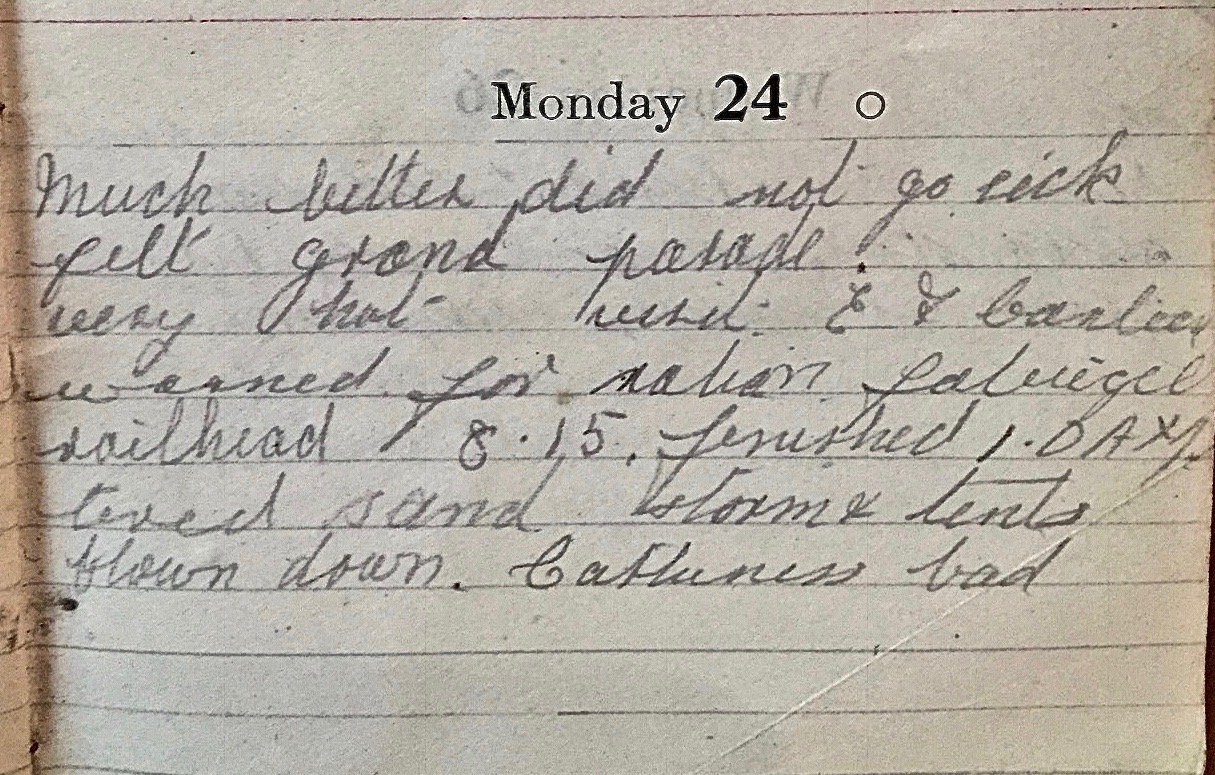Monday June 24th, 1918
Much better, did not go sick. Felt grand. Parade. Very hot. Visit E. F. Canteen. Warned for ration fatigue at railhead 8:15, finished 1am. Tired. Sand storm and tents blown down. Caithness bad.
Imperial War Conference 1918
The main topics discussed by the Imperial War Conference of 1918 related to the prosecution of the war. However they also spent a considerable amount of time discussing the work of the Imperial War Graves Commission (IWGC). Delegates were particularly concerned that pressure should be put on Turkey, despite being an enemy power, to safeguard the graves in Gallipoli. They also agreed that the costs of the IWGC programme would be shared across the Empire – in proportion to the number of each nation’s war graves.
Conversations were also started but not concluded on the emigration of ex-servicemen and others after the war.¹
Imperial War Graves Commission (IWGC)
The formation of the IWGC had been agreed by the Imperial War Conference of 1917. The Prince of Wales became its president and Fabian Ware, its vice-chair.
Responsibility for identifying and recording the dead had been an ad hoc affair at the beginning of the war. Recognizing this, Fabian Ware and the Red Cross had stepped into the breach. The Graves Registration Committee was formed in 1915 and the Directorate of Graves Registration & Enquiries (DGRE), the following year. Their remit was expanded to cover the cemeteries and graves.
However, throughout the war, military units remained responsible for burying the dead, a harrowing task. This too was increasingly formalized and by 1917 Divisional and Corps Burial Officers were introduced to coordinate the activity. Across all theatres of war, 500,000 men had been identified and buried in recorded graves by the Armistice.
‘The end of the war left uncleared recent dead, isolated graves, and a myriad of accidental inhumations. Three tasks now faced DGR&E and the Imperial War Graves Commission (IWGC) which had come into being on 21 May 1917. The first was to concentrate an estimated 160,000 isolated graves; the second was to concentrate small cemeteries into larger ones; and the third was to locate and identify the missing, estimated at over half a million.’³
It wasn’t until 1920, and after considerable debate, that it was agreed that the bodies would not be repatriated but left in the IWGC cemeteries.
Fabian Ware

Major General Sir Fabian Arthur Goulstone Ware (1869 – 1949) took a rather circuitous route to this Army rank.
He worked in education in England and the Transvaal, became a newspaperman (editor of the Morning Post 1905-11), and ultimately a businessman, as a director of Rio Tinto Ltd. Ware volunteered for the Army in 1914 but was too old. Instead he was given command of a mobile ambulance unit for the Red Cross on the Western Front.
Concerned about the imprecise recording of the names and burial sites of fallen soldiers, he formed a team to take on the task. Both Ware and his team were transferred to the Graves Registration Committee when it was created.
He remained vice chair of the IWGC until 1948 and during WWII, took charge of the re-formed DGRE at the War Office.
The IWGC became the Commonwealth War Graves Commission in 1960.
13th (Service) Battalion War Diary – 24th June 1918 – Divisional Horse Show Ground, Cugunci
Fatigues as usual. Companies training, special attention being paid to work in gas helmets & range practice.
References & Further Reading
¹ Imperial Economic Policy, The War Conference in the Guardian, June 24 1918, page 6
² Commonwealth War Graves Commission on Wikipedia
³ ‘Battlefield Clearance & Burial‘ by Peter Hodgkinson for the University of Birmingham’s Journal of First World War Studies – accessed from the Long Long Trail website
º Fabian Ware in Wikipedia
* Fabian Ware, photograph by Bassano, copyright of the National Portrait Gallery


